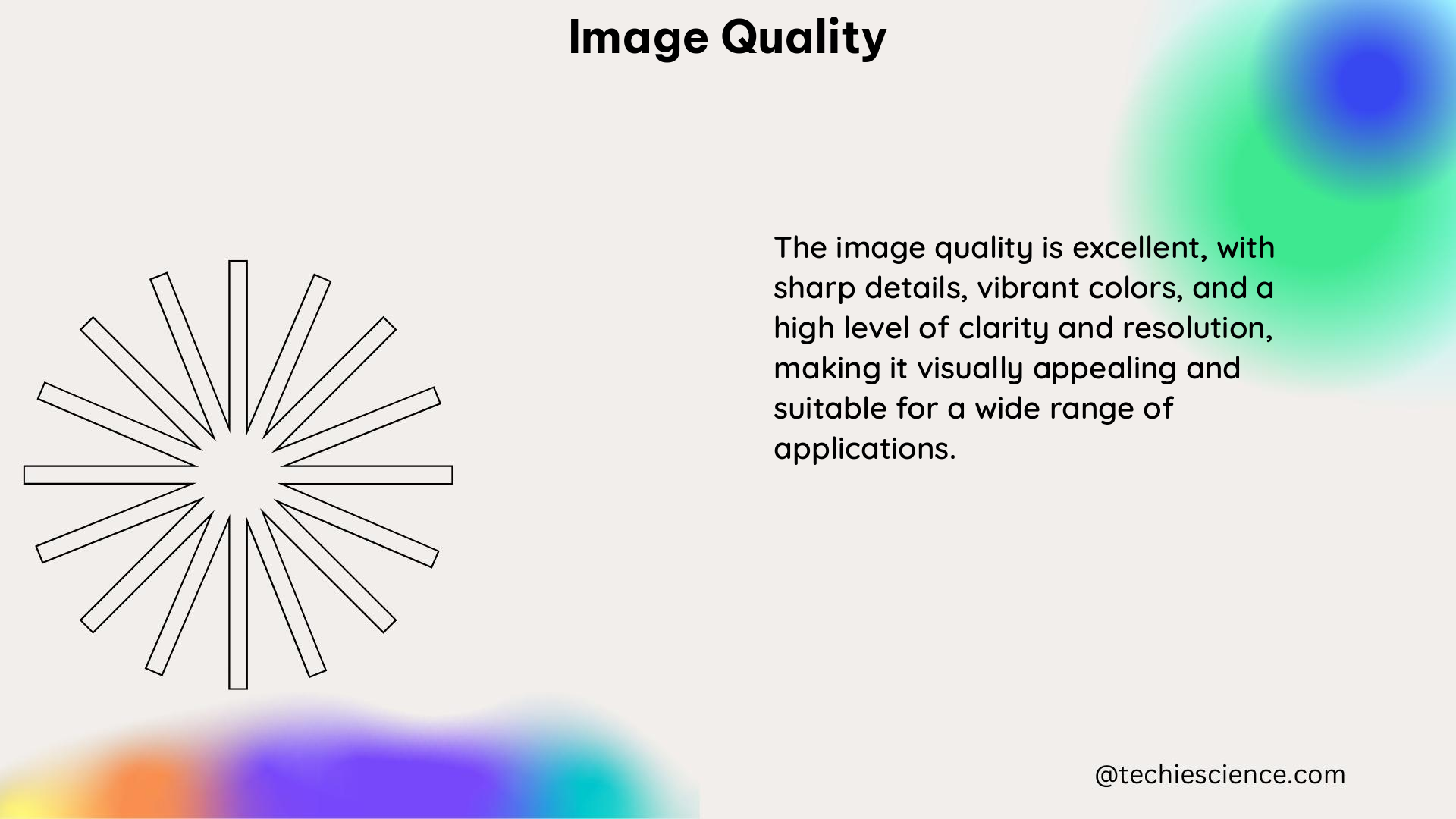Image quality is a critical aspect of image analysis, particularly in fields such as biology and medicine where accurate measurement and interpretation of images are essential. This comprehensive guide will delve into the various techniques and metrics used to quantify image quality, providing physics students with a deep understanding of this crucial topic.
Understanding Image Quality Metrics
Signal-to-Noise Ratio (SNR)
The signal-to-noise ratio (SNR) is a fundamental metric used to measure image quality. It is defined as the ratio of the signal power to the noise power, and is calculated using the formula:
SNR = (Signal Power) / (Noise Power)
A higher SNR indicates a better image quality, as it means the signal is stronger compared to the noise. In medical imaging applications, such as MRI, a high SNR is crucial for obtaining clear and accurate images.
Contrast-to-Noise Ratio (CNR)
The contrast-to-noise ratio (CNR) is another important metric that measures the contrast between different regions of an image relative to the noise level. The formula for CNR is:
CNR = (Contrast) / (Noise Standard Deviation)
A higher CNR indicates better image quality, as it means the contrast between different regions is more pronounced compared to the noise.
Structural Similarity Index (SSIM)
The structural similarity index (SSIM) is a metric that measures the similarity between two images based on their luminance, contrast, and structural information. The formula for SSIM is:
SSIM(x, y) = [(2μxμy + C1)(2σxy + C2)] / [(μx^2 + μy^2 + C1)(σx^2 + σy^2 + C2)]
where x and y are the two images being compared, μx and μy are the means of x and y, σx and σy are the standard deviations of x and y, and σxy is the covariance of x and y.
A higher SSIM value indicates a greater similarity between the two images, which can be used to assess the quality of image processing algorithms or to compare different images.
Image Quality Measurement Tools

CellProfiler
CellProfiler is a powerful tool that provides a battery of image quality metrics for assessing the quality of images in high-content screening applications. These metrics include measures of image focus, brightness, contrast, and various image artifacts such as saturation and haloing.
By using these metrics, it is possible to quantify image quality in a way that is independent of the specific application or analysis being performed, allowing for a more objective assessment of image quality.
Comparing Images and Algorithms
In addition to the metrics and tools mentioned above, it is also possible to measure image quality by comparing images to a reference standard or by using machine learning algorithms to learn the features that distinguish high-quality images from low-quality images.
For example, a machine learning algorithm could be trained on a set of images that have been manually labeled as high or low quality, and then used to classify new images based on their features. This approach can be particularly useful for identifying subtle differences in image quality that may not be easily captured by traditional metrics.
Numerical Problems and Examples
To illustrate the practical application of image quality measurement, let’s consider a few numerical problems and examples:
Numerical Problem 1:
Calculate the SNR of an image with a signal power of 100 and a noise power of 10.
Solution:
SNR = (Signal Power) / (Noise Power)
SNR = 100 / 10 = 10
This indicates that the image has a relatively high SNR, suggesting good image quality.
Example 1:
In medical imaging, the use of SNR is crucial for assessing the quality of MRI images. An MRI image with a high SNR would have a clear signal with minimal noise, allowing for accurate diagnosis and interpretation. Conversely, an image with a low SNR would have a weak signal with a lot of noise, making it more difficult to interpret.
Example 2:
In high-content screening applications, the use of CellProfiler’s image quality metrics can help researchers ensure that the images they are analyzing are of sufficient quality for downstream analysis. For instance, the metrics related to image focus and contrast can help identify images that may be blurry or have poor contrast, which could impact the accuracy of cell identification or other analysis tasks.
Conclusion
Image quality is a critical aspect of image analysis, and there are numerous metrics and tools available for quantifying and assessing image quality. By understanding the various approaches to image quality measurement, physics students can ensure that the images they work with are of the highest quality, leading to more accurate and reliable results in their research and applications.
References:
- SMART Goals: A How to Guide. https://www.ucop.edu/local-human-resources/_files/performance-appraisal/How%20to%20write%20SMART%20Goals%20v2.pdf
- Measure Data Quality – 7 Metrics to Assess Your Data. https://www.precisely.com/blog/data-quality/how-to-measure-data-quality-7-metrics
- Quantification of Image Quality? – Image Analysis – Image.sc Forum. https://forum.image.sc/t/quantification-of-image-quality/25610

The lambdageeks.com Core SME Team is a group of experienced subject matter experts from diverse scientific and technical fields including Physics, Chemistry, Technology,Electronics & Electrical Engineering, Automotive, Mechanical Engineering. Our team collaborates to create high-quality, well-researched articles on a wide range of science and technology topics for the lambdageeks.com website.
All Our Senior SME are having more than 7 Years of experience in the respective fields . They are either Working Industry Professionals or assocaited With different Universities. Refer Our Authors Page to get to know About our Core SMEs.